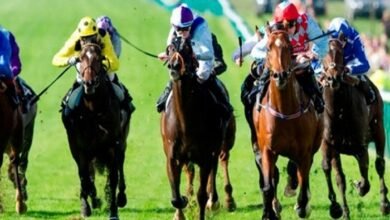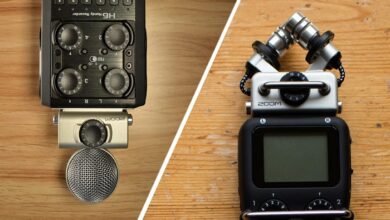How to Choose the Right Turf for Your Lawn

Turf is a term that refers to the surface layer of land that consists of grass and the soil in which its roots grow. Turf can also refer to an artificial substitute for grass, such as on a playing field or a golf course. Turf is an important element of landscaping, as it can enhance the appearance, functionality, and value of your property. However, choosing the right turf for your lawn can be a challenging task, as there are many factors to consider, such as climate, soil, maintenance, budget, and personal preference. We will provide some tips and guidelines on how to choose the right turf for your lawn.
Types of Turf
There are two main types of turf: natural and artificial. Natural turf is made of living grass plants that grow from seeds or sods. Artificial turf is made of synthetic fibers that mimic the look and feel of natural grass. Each type of turf has its own advantages and disadvantages that you should weigh before making a decision.
Natural Turf
Natural turf is the most common and preferred type of turf for most homeowners, as it offers a natural and organic look and feel. Natural turf also has some environmental benefits, such as producing oxygen, filtering pollutants, reducing erosion, and cooling the air. However, natural turf also requires more care and maintenance than artificial turf, such as watering, mowing, fertilizing, weeding, and aerating. Natural turf can also be affected by pests, diseases, weeds, and weather conditions.
There are many varieties of natural turf that differ in their characteristics, such as color, texture, density, growth rate, drought tolerance, shade tolerance, and disease resistance. Some of the most popular varieties of natural turf are:
- Bermuda grass: This is a warm-season grass that grows well in sunny and hot climates. It has a fine texture and a dark green color. It is very durable and resistant to wear and tear. It can also tolerate drought and salt. However, it can be invasive and difficult to control. It also requires frequent mowing and fertilizing.
- Zoysia grass: This is another warm-season grass that grows well in sunny and warm climates. It has a medium texture and a light green color. It is very dense and resilient to traffic and weeds. It can also tolerate drought and shade. However, it can be slow to establish and recover. It also requires regular mowing and dethatching.
- St. Augustine grass: This is a warm-season grass that grows well in humid and coastal climates. It has a coarse texture and a dark green color. It is very lush and attractive to look at. It can also tolerate shade and salt. However, it can be susceptible to pests and diseases. It also requires frequent watering and fertilizing.
- Kentucky bluegrass: This is a cool-season grass that grows well in temperate and cold climates. It has a fine texture and a dark blue-green color. It is very soft and smooth to touch. It can also tolerate cold and frost. However, it can be sensitive to heat and drought. It also requires frequent watering and fertilizing.
- Perennial ryegrass: This is another cool-season grass that grows well in temperate and cold climates. It has a medium texture and a bright green color. It is very fast-growing and easy to establish. It can also tolerate traffic and wear. However, it can be prone to diseases and insects. It also requires frequent watering and mowing.
- Fescue grass: This is a cool-season grass that grows well in temperate and cold climates. It has a fine to medium texture and a dark green color. It is very adaptable and versatile. It can tolerate shade, drought, and poor soil. However, it can be coarse and clumpy. It also requires moderate watering and fertilizing.
Read more about Succesturf65: A Website for Turf Lovers and Bettors
Artificial Turf
Artificial turf is an alternative type of turf that is becoming more popular among homeowners who want to save time, money, and water on lawn care. Artificial turf is made of synthetic fibers that mimic the look and feel of natural grass. Artificial turf also has some advantages, such as being durable, low-maintenance, allergy-free, and pest-free. However, artificial turf also has some disadvantages, such as being expensive, unnatural, hot, and potentially harmful. Some of the factors that affect the quality and performance of artificial turf are:
- Fiber material: This is the type of synthetic material that is used to make the artificial grass blades. The most common materials are polyethylene, polypropylene, and nylon. Each material has its own pros and cons in terms of appearance, softness, durability, and cost.
- Fiber shape: This is the shape of the artificial grass blades that affects their resilience and realism. The most common shapes are flat, oval, V-shaped, W-shaped, and C-shaped. Each shape has its own pros and cons in terms of bounce, texture, and color.
- Pile height: This is the height of the artificial grass blades that affects their density and comfort. The most common heights are 20mm, 30mm, 40mm, and 50mm. Each height has its own pros and cons in terms of cushioning, softness, and realism.
- Infill material: This is the type of material that is used to fill the gaps between the artificial grass blades and the backing layer. The most common materials are sand, rubber, or a combination of both. Each material has its own pros and cons in terms of stability, drainage, and safety.
How to Choose the Right Turf for Your Lawn
To choose the right turf for your lawn, you need to consider several factors, such as:
- Climate: This is the most important factor that determines the type and variety of turf that will suit your lawn. You need to choose a turf that can adapt to the temperature, humidity, rainfall, and sunlight of your location. For example, if you live in a hot and dry climate, you may want to choose a warm-season grass or an artificial turf that can tolerate drought and heat. If you live in a cold and wet climate, you may want to choose a cool-season grass or an artificial turf that can tolerate frost and moisture.
- Soil: This is another important factor that affects the growth and health of your turf. You need to choose a turf that can thrive in the type and quality of soil that you have. For example, if you have sandy soil, you may want to choose a turf that can retain water and nutrients. If you have clay soil, you may want to choose a turf that can improve drainage and aeration.
- Maintenance: This is another important factor that influences your time, money, and effort on lawn care. You need to choose a turf that matches your level of commitment and preference on maintenance. For example, if you want to save water and reduce mowing, you may want to choose an artificial turf or a drought-tolerant grass. If you want to have a natural and organic lawn, you may want to choose a natural turf or a low-fertilizer grass.
- Budget: This is another important factor that affects your initial and ongoing costs on lawn installation and maintenance. You need to choose a turf that fits your budget and gives you the best value for your money. For example, if you have a low budget, you may want to choose a seed or sod option rather than an artificial turf option. If you have a high budget, you may want to choose a high-quality and long-lasting artificial turf option rather than a cheap and low-quality one.
Conclusion
Turf is a term that refers to the surface layer of land that consists of grass and the soil in which its roots grow. Turf can also refer to an artificial substitute for grass, such as on a playing field or a golf course. Turf is an important element of landscaping, as it can enhance the appearance, functionality, and value of your property. However, choosing the right turf for your lawn can be a challenging task, as there are many factors to consider, such as climate, soil, maintenance, budget, and personal preference.
There are two main types of turf: natural and artificial. Natural turf is made of living grass plants that grow from seeds or sods. Artificial turf is made of synthetic fibers that mimic the look and feel of natural grass. Each type of turf has its own advantages and disadvantages that you should weigh before making a decision.
To choose the right turf for your lawn, you need to consider several factors, such as climate, soil, maintenance, budget, and personal preference. You need to choose a turf that can adapt to your location, thrive in your soil, match your level of commitment and preference on maintenance, fit your budget, and give you the best value for your money.



